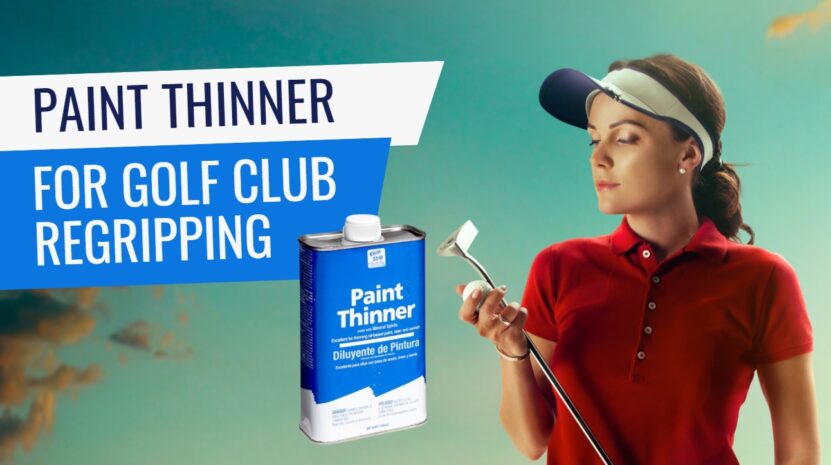More often than not, I’ve found that maintaining the grip of my golf clubs plays a vital role in my game. These grips are the sole point of contact between us and our clubs, and their condition can significantly influence performance. Over time, they wear down due to various factors like weather, natural wear, and even oils from our skin.
That’s why we often find ourselves needing to regrip our clubs – a doable task at home or with professional help. A common question that arises in this context is, can we use paint thinner for this job? In this post, I’ll draw from my experience to address this query, exploring the process, safety aspects, and alternatives to using paint thinner for regripping golf clubs.
The Regripping Process Explained
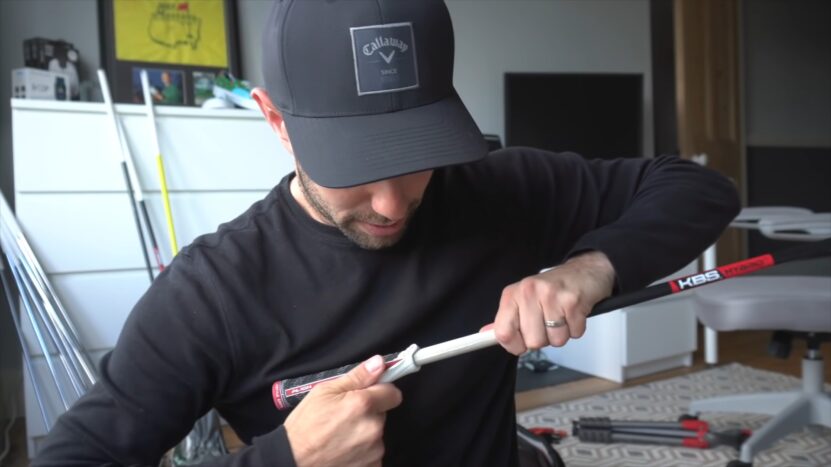
The regripping process of a golf club involves removing the old grip and adhesive, preparing the shaft for the new grip, applying fresh adhesive, and finally installing the new grip. Though it might sound simple, it requires a proper method and suitable materials to ensure optimal results.
Traditionally, the adhesive used to secure the grip is solvent-based, requiring a suitable solvent to soften it for removal. Here, many golfers wonder if a common household solvent like paint thinner can be employed for this purpose.
But before we jump into that, let’s understand why we need a solvent at all. Solvents serve a dual purpose in regripping. They help remove the old adhesive and facilitate the installation of new grips by lubricating the shaft, making it easier to slide the grip into place. Once the solvent evaporates, the new adhesive secures the grip firmly.
Can I Use Paint Thinner?
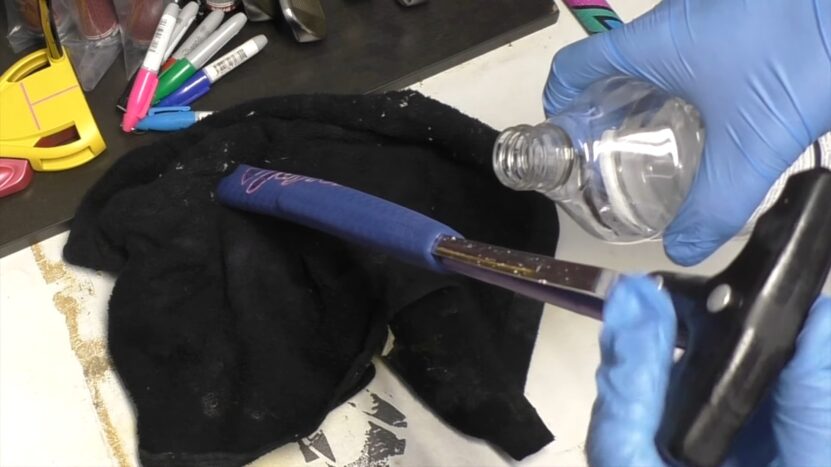
Here’s the short answer – Yes, you can use paint thinner to regrip golf clubs. However, it’s essential to note that while possible, it may not always be the most recommended method due to potential safety risks and the material compatibility of your grips.
- Safety risks: Paint thinners are highly volatile and flammable. They give off fumes that can be harmful if inhaled in large quantities or for extended periods. When using paint thinner, it’s crucial to work in a well-ventilated area, preferably outdoors, and to avoid any open flames or sparks.
- Material compatibility: Not all golf grips are compatible with paint thinner. Some rubber-based grips might react adversely to the chemical, resulting in a compromised grip or reduced lifespan.
Before proceeding with using paint thinner, always check the manufacturer’s recommendations for the grip you’re using.
How to Use Paint Thinner in Regripping
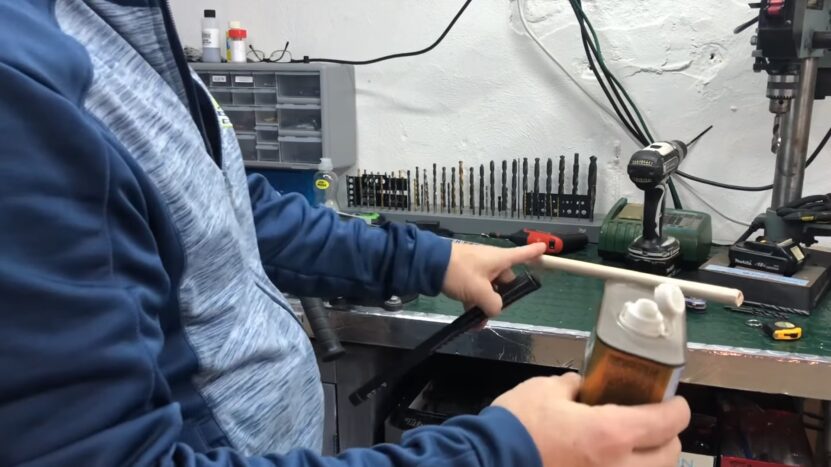
Should you choose to proceed with paint thinner, the process involves the same steps as any other regripping process, with the paint thinner acting as the solvent. Firstly, you’ll have to remove the old grip and scrape off any remaining adhesive from the shaft.
Next, use a cloth soaked in paint thinner to clean the shaft thoroughly. Then, pour some paint thinner into the new grip, cover the open end, and shake it to coat the interior. Pour the paint thinner-soaked grip over the adhesive layer on the shaft. Finally, install the grip, aligning it correctly before the solvent evaporates. Always remember safety first – wear gloves and work in a ventilated area.
The Controversy Around Paint Thinner
There’s a fair bit of controversy surrounding the use of paint thinner for regripping golf clubs. While some swear by its efficacy and cost-effectiveness, others caution against it due to potential risks and lack of professional endorsement.
On the one hand, advocates highlight paint thinner’s widespread availability and cost-effectiveness compared to specialized golf grip solvents. Additionally, they suggest that with proper safety measures, the risks can be managed.
On the other hand, critics argue that the potential risks outweigh the benefits. They note the dangers related to inhalation and flammability, along with the possible adverse effects on the grip material. They suggest that it’s safer and more effective to use professionally endorsed products designed specifically for regripping golf clubs.
Commercial Grip Solvents: A Safer Alternative?
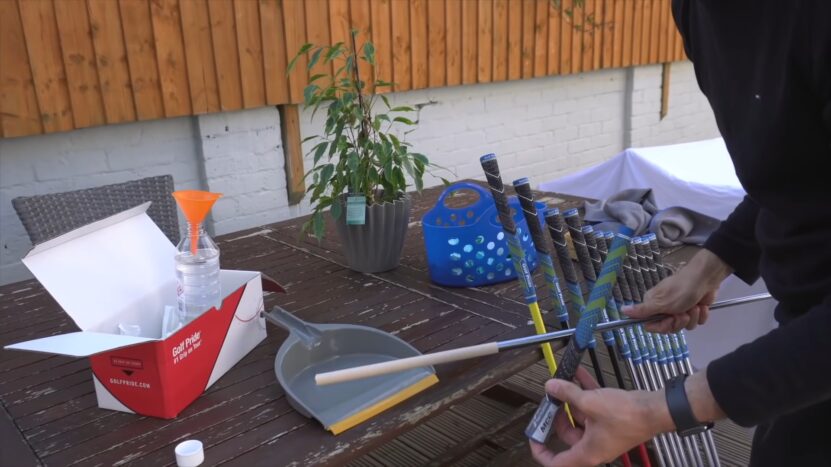
For those who prefer not to take any risks, commercial grip solvents are a readily available alternative. These products are explicitly designed for regripping golf clubs, ensuring compatibility with grip materials and reduced health risks.
Commercial grip solvents are often no more challenging to use than paint thinner. The process remains the same – remove the old grip, clean the shaft, apply solvent to the new grip and shaft, and install the new grip. Furthermore, many commercial grip solvents come in convenient kits with everything needed for the regripping process, including grip tape, vice clamps, and even instructions, making it a comprehensive, hassle-free solution.
Water-Based Solvents: The Eco-Friendly Choice
For those conscious of environmental impact, water-based solvents offer an eco-friendly choice. These products are non-toxic, non-flammable, and biodegradable, making them safe for the user and the environment.
While the process of using water-based solvents is identical to other methods, they often require a little more time to evaporate and allow the new grip to set firmly. However, the additional wait time is a small price to pay for a more sustainable choice.
Other Alternatives to Consider
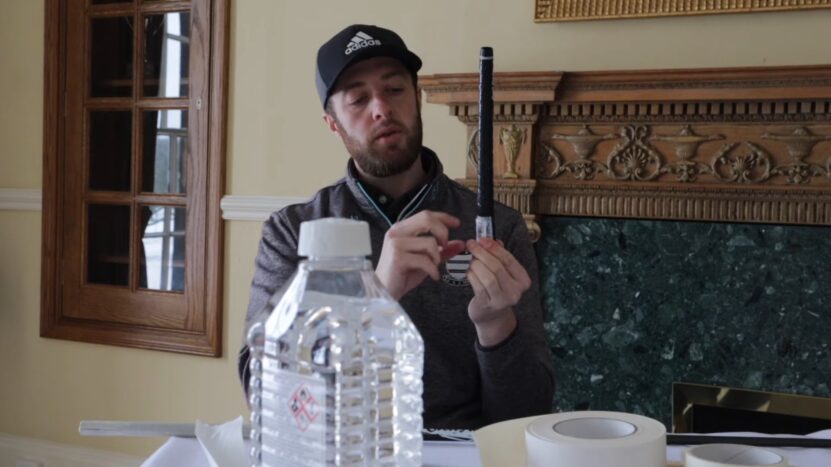
While paint thinner, commercial grip solvents, and water-based solvents are common options, they aren’t the only ones. Other alternatives include:
- Rubbing Alcohol: An effective solvent that’s less volatile than paint thinner. It’s safe for most grip materials and evaporates quickly.
- Mineral Spirits: A popular choice among golfers, mineral spirits are less toxic and flammable than paint thinner and work with most grip materials.
- Dish Soap and Water: A mild solution of dish soap and water can work in a pinch. It’s non-toxic and safe, but it takes much longer to dry.
Remember, always check the compatibility of these solvents with your grip material before use.
A Step-by-Step Guide to DIY Regripping
Now that we have a firm grasp of the role of solvents and the options available let’s delve into a step-by-step guide on DIY regripping, regardless of your choice of solvent:
- Remove the old grip.
- Scrape off any remaining adhesive from the shaft.
- Apply double-sided grip tape to the shaft.
- Pour your chosen solvent into the new grip, cover the open end, and shake it to coat the interior.
- Pour the solvent-soaked grip over the adhesive layer on the shaft.
- Install the new grip, aligning it correctly before the solvent evaporates.
This simple process, done correctly, can enhance your game by providing a firm and comfortable grip on your clubs.
Tips for Successful Regripping
Here are a few tips to ensure a successful DIY regripping experience:
- Always check the compatibility of your chosen solvent with the grip material.
- Always prioritize safety by using gloves and working in a well-ventilated area.
- Ensure you align the new grip correctly before the solvent evaporates.
- Allow enough time for the solvent to evaporate and the grip to set firmly before using the club.
When to Seek Professional Help
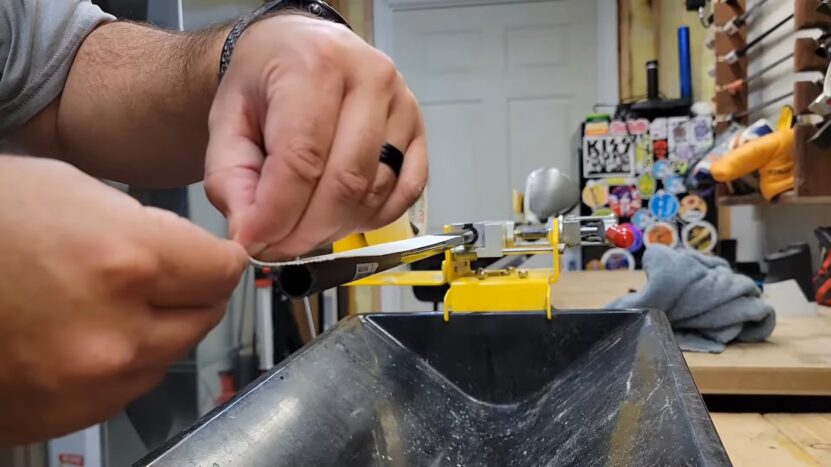
While DIY regripping can be a cost-effective and rewarding process, there are times when it’s better to seek professional help. If you’re uncomfortable handling solvents, have high-end clubs you don’t want to risk damaging, or simply want a perfect job, professional club fitters can provide a hassle-free and high-quality service.
FAQs
1. Can I use any solvent for regripping golf clubs?
No, not all solvents are safe or effective for regripping golf clubs. Always check the manufacturer’s instructions for recommended solvents.
2. How often should I regrip my golf clubs?
The frequency of regripping depends on usage, but a general rule of thumb is at least once a year.
3. Can I play immediately after regripping my clubs?
No, you should wait until the solvent has fully evaporated and the grip is firmly set. This can take a few hours to overnight, depending on the solvent used.
Closing Thoughts
Yes, paint thinner can be used to regrip golf clubs. However, the decision to use it should take into consideration safety risks, grip material compatibility, and personal comfort. There are several alternatives available, each with its own set of advantages and drawbacks.
It’s essential to make an informed choice that suits your specific needs and circumstances. Regripping your clubs, whether through a DIY project or with professional help, can make a world of difference in your game. So, next time your club grip feels worn out, you know what to do.
Now, before you go, check out our article on best practices for golf club maintenance using none other than dish soap.

